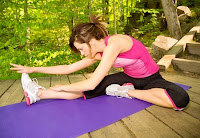Warming up is a vital component of every workout. In addition to getting us mentally and physically ready for exercise, it provides an opportunity to practice the movements we are going to perform in the coming session whilst hopefully minimising the risk of suffering injury while training.
So, how best to warm up? Assuming you are warming up for a general workout, it makes sense to perform a generalised warm up which gets all the muscles, joints and systems of the body working well to facilitate a good training session. The ingredients of a general warm are
1) The pulse raiser – cardiovascular exercise is used to raise the heart rate and is the part of the warm up that makes you warm! It’s important to make the pulse raiser graduated i.e. increase in intensity over time. By using exercises such as rowers, cross trainers or skipping, in addition to raising the pulse, it is possible to mobilise all the major joints of the body. You should finish your pulse raiser at an RPE or around 5/6 or, in other words, feeling ready to get on with some more strenuous exercise! 5 to 10 minutes spent on this component of warming up is plenty – we want to be warmed up and not worn out after all.
2) Joint mobility – chances are that if you selected the rower, cross trainer or skipping, you’ll have mobilised your major joints already and won’t need to spend any further time getting your joints ready for exercise. If, however, you warmed up using a bike or treadmill, you may well need to mobilise the joints you didn’t move during that exercise. To mobilise a joint, simply take it through its natural range of movement in a controlled fashion, increasing the degree of motion as you feel the joint warming up e.g. shallow knee bends progressing to full squats over 10-15 reps to mobilise the hips and knees or small arm circles progressing to full arm circles to mobilise the shoulders.
3) Flexibility – it’s not uncommon to see people performing static stretches as part of their warm up but, as useful as this type of stretching is, it’s far better to utilise a method of stretching called dynamic stretching in the warm up and leave the static stretches for the cool down. Static stretches tend to cause reduced blood flow through muscles, muscular relaxation, the pulse to slow and reduced body temperature – none of which sound like things we want in a warm up! In comparison, dynamic stretches keep the heart rate and body temperature elevated, “wake up” our muscles, mirror the movements likely to be performed in the workout and also promote joint mobility.
